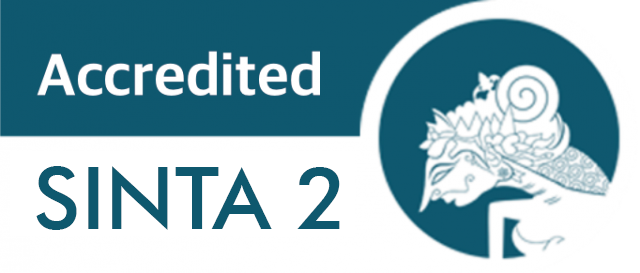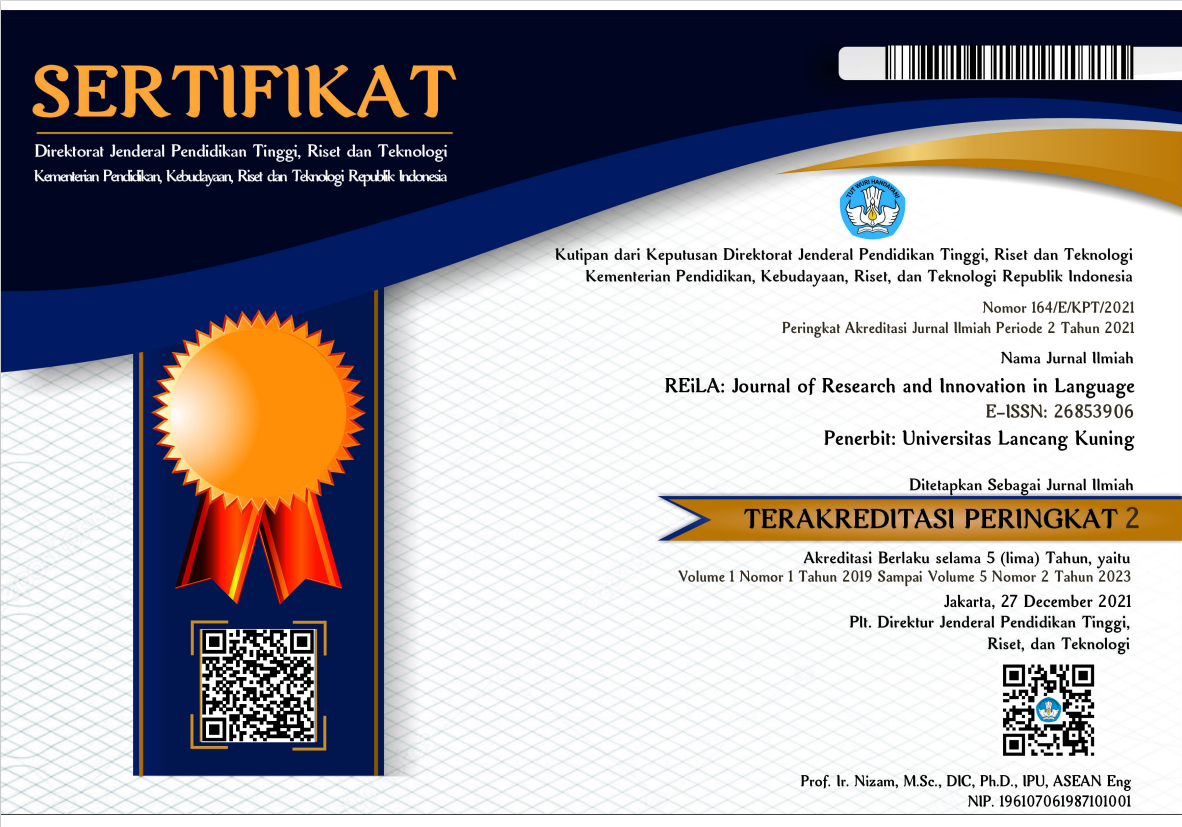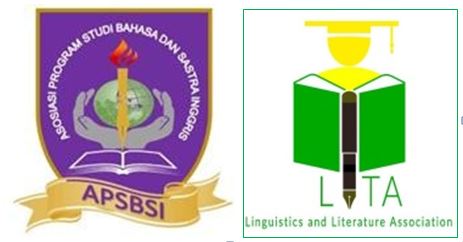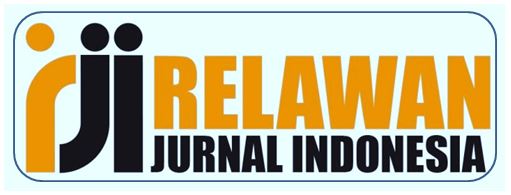A Pivotal Stride towards Learner Autonomy: Utilising Language Learning Strategies in an ESL University
Abstract
Research has revealed that utilisation of the English language learning strategies (ELLSs) is essential for supporting learner autonomy (LA). Yet, most of these studies focus on English as a foreign language, leaving studies on English as a second language on the fringes of current literature, though the two are distinct. Thus, this paper examined the effect of ELLSs on LA of ESL technical university students, as well as the individual effects of the six categories of ELLSs (memory, cognitive, compensation, metacognitive, affective and social strategies) on LA. A quantitative cross-sectional survey was conducted on 2022/2023 first-year 773 students who were selected through stratified random sampling. Oxford’s Strategy Inventory for Language Learning (SILL) and Karabıyık’s measures of learner autonomy were used to assess ELLSs and LA, respectively. Data were collected via google form. A multiple regression analysis was used to test the proposed research model. The results revealed that ELLSs have a positive impact on LA. While all six categories of ELLs improved LA, affective strategies improved LA the most. Despite the significance of affective strategies in fostering LA in this study, earlier research has largely focused on affective factors such as motivation, for autonomous learning. Thus, this study reveals a novel finding that affective strategies may be the most effective at facilitating autonomous learning in an ESL context, specifically a university setting in Ghana. The study backs up the Constructivism theory's claim that learner autonomy occurs as a result of social interaction, which includes learning strategies. The study confirms that in a Ghanaian ESL context, when the learners utilise ELLSs, they go through the zone of proximal development (ZPD) until optimal performance is achieved (in this context until the learner becomes an autonomous learner). Thus, Ghanaian technical university English teachers should be trained on effective ELLSs use to help students adopt appropriate ELLSs to improve their autonomous learning.
Downloads
References
Abdipoor, N., & Gholami, H. (2016). Autonomous and non-autonomous EFL learners’ strategies and practices. International Journal of Foreign Language Teaching and Research, 4(14), 107-121.
Aboagye, A. K., Antwi, H. A., & Asafo-Adjei, R. (2017). The fall in standards of English language usage in Ghana’s tertiary institutions: Takoradi Technical University episode. British Journal of Interdisciplinary Research, 8(1), 1-19.
Alege, T. C. (2018). A lexico-semantic analysis of the language of sports reporting in a Nigerian sports magazine. Journal Of Humanities And Social Science, 23(9), 77-84.
Almusharraf, N., & Bailey, D. R. (2021). A regression analysis approach to measuring the influence of student characteristics on language learning strategies. International Journal of Instruction, 14(4), 463-482. https://doi.org/10.29333/iji.2021.14428a
Alrashidi, O. (2022). Assessing language learning strategies employed by university English major students in Saudi Arabia. Cogent Education, 9(1), 1-19. https://doi.org/10.1080/2331186X.2022.2074935
Alzubi, A. A. F. (2019). Smartphone-mediated language learning strategies and learner autonomy among pre-university learners in EFL reading context. Journal of Humanities and Social Sciences Studies, 1(3), 49-63.
Ansari, F. K. M. P. F., & Natalia, L. (2020). The impact of collaborative instruction of language learning strategies on language learning beliefs and learner autonomy. XLinguae, 13(4), 216-234. https://doi.org/10.18355/XL.2020.13.04.16
Aziz, S. N. S. M., & Shah, P. M. (2020). Language learning strategy (LLS) for English language learners in polytechnic. Journal of Personalized Learning, 3(1), 71-78.
Azizah, S., & Soraya, S. (2023). A closer look on Indonesian EFL students’ writing process: The application of cognitive and metacognitive strategies. REiLA: Journal of Research and Innovation in Language, 5(2), 128-143. https://doi.org/10.31849/reila.v5i2.10687
Basri, F. (2023). Factors influencing learner autonomy and autonomy support in a faculty of education. Teaching in Higher Education, 28(2), 270-285. https://doi.org/10.1080/13562517.2020.1798921
Berk, L. E., & Winsler, A. (1995). Scaffolding children's learning: Vygotsky and early childhood education (Vol. 7). National Association for the Education of Young Children.
Bhattarai, P. (2021). English language teachers' perceptions and practices on learner autonomy in Nepalese context. REiLA: Journal of Research and Innovation in Language, 3(1), 17-25. https://doi.org/10.31849/reila.6064
Ceylan, N. O. (2015). Fostering learner autonomy. Procedia-Social and Behavioral Sciences, 199, 85-93. https://doi.org/10.1016/j.sbspro.2015.07.491
Chamot, A. U. (1987). A study of learning strategies in foreign language instruction (First Year Report, Issue.
Chen, H.-I., & Pan, H.-H. (2015). Learner autonomy and the use of language learning strategies in a Taiwanese junior high school. Journal of Studies in Education, 5(1), 52-64. https://doi.org/10.5296/jse.v5i1.6972
Cheng, J., Sagaya Raj, G., & Tan Tjin Ai, J. (2018). The relationship among learning strategy, autonomy and language proficiency of Chinese EFL learners. International Journal of Foreign Language Teaching and Research, 6(23), 23-34.
Chetin, H. K., & Mede, E. (2022). The relationship between learner autonomy and language learning strategies among English for medical purposes (EMP) students in Turkey. Khazar Journal of Humanities and Social Sciences, 25(3), 38-59. https://doi.org/10.5782/2223-2621.2022.25.3.38
Christel, K. (2020). Gender disparities in Ghana's tertiary education system. Journal of Student Affairs, New York University, 16, 34-39.
Cohen, A. D., & Chi, J. C. (2002). Language strategy use inventory and index. In R. M. Paige, A. D. Cohen, B. Kappler, J. C. Chi, & J. P. Lassegard (Eds.), Maximizing study abroad: A students’ guide to strategies for language culture learning and use (pp. 16-22). Center for Advanced Research on Language Acquisition (CARLA), University of Minnesota.
Danish, F., & Rizvi, S. (2021). Approximately optimum strata boundaries for two concomitant stratification variables under proportional allocation. Statistics in Transition new series, 22(4), 19-40. https://doi.org/10.21307/stattrans-2021-036
Ellis, R. (1994). The study of second language acquisition. Oxford University.
Gogtay, N. J., & Thatte, U. M. (2017). Principles of correlation analysis. Journal of the Association of Physicians of India, 65(3), 78-81.
Habók, A., & Magyar, A. (2018). Validation of a self-regulated foreign language learning strategy questionnaire through multidimensional modelling. Frontiers in Psychology, 9(1388), 1-11. https://doi.org/10.3389/fpsyg.2018.01388
Holec, H. (1979). Autonomy and foreign language learning. ERIC.
Hosseini, S. A., Rajabi, P., & Mahmoodi, K. (2023). The impact of using flipped classrooms on Iranian EFL learners' autonomy and their attitude toward learning English. Journal of Applied Linguistics, 2(1), 43-56.
Iamudom, T., & Tangkiengsirisin, S. (2020). A comparison study of learner autonomy and language learning strategies among Thai EFL learners. International Journal of Instruction, 13(2), 199-212. https://doi.org/10.29333/iji.2020.13214a
Irgatoğlu, A., Sarıçoban, A., Özcan, M., & Dağbaşı, G. (2022). Learner autonomy and learning strategy use before and during the COVID-19 pandemic. Sustainability, 14(10), 1-14. https://doi.org/10.3390/su14106118
Jenkins, D. G., & Quintana-Ascencio, P. F. (2020). A solution to minimum sample size for regressions. PloS one, 15(2), 1-15. https://doi.org/10.1371/journal.pone.0229345
Jianfeng, C., Raj, G. S., & Ai, J. (2018). The relationships among language learning strategy, motivation, anxiety and autonomy in Chinese EFL learners. International Journal of Engineering and Technology, 7(3.21), 508-512.
Jiang, Y., & Peng, J.-E. (2023). Exploring the relationships between learners’ engagement, autonomy, and academic performance in an English language MOOC. Computer Assisted Language Learning, 1-26. https://doi.org/10.1080/09588221.2022.2164777
Karabıyık, A. (2008). The relationship between culture of learning and Turkish university preparatory students' readiness for learner autonomy Bilkent Universitesi ]. Turkey.
Khulaifiyah, K., Anugerahwati, M., & Widiati, U. (2022). Autonomous learning among EFL undergraduate students in selected private Indonesian Islamic University: Voices and activities. REiLA: Journal of Research and Innovation in Language, 4(2), 232-242. https://doi.org/10.31849/reila.v4i2.9306
Khulaifiyah, K., Widati, U., Anugerahwati, M., & Suryati, N. (2021). Autonomous learning activities: The perceptions of English language students in Indonesia. Pegem Journal of Education and Instruction, 11(3), 34-49. https://doi.org/10.14527/pegegog.2021.00
Koç, D. K., & Koç, S. E. (2016). Understanding learner autonomy through cognitive, metacognitive and social strategies used by English language learners in a computer-based classroom. Journal of Language Teaching and Learning, 6(2), 58-69.
Kpeglo, S. B., & Mortey, F. M. R. (2021). English language learning strategies of pre-service teachers in a Ghanaian College Of Education. International Journal of English Language Teaching, 9(6), 52-81. https://doi.org/10.37745/ijelt.13
Lapidow, E., & Walker, C. M. (2022). Rethinking the “gap”: Self‐directed learning in cognitive development and scientific reasoning. Wiley Interdisciplinary Reviews: Cognitive Science, 13(2), 1-13. https://doi.org/10.1002/wcs.1580
Liu, H.-j. (2015). Use of learning strategies by EFL learners: A study of how it relates to language proficiency and learner autonomy. International Journal of English Linguistics, 5(2), 21-35. https://doi.org/10.5539/ijel.v5n2p21
Marckwardt, A. H. (1963). English as a second language and English as a foreign language. PMLA, 78(2), 25-28. https://doi.org/10.2307/2699267
Mohammadi, H., & Alizadeh, K. (2014). An investigation of reliability and validity of strategy inventory for language learning among Iranian university students. International Journal of English Language Teaching, 1(2), 53-63. https://doi.org/10.5430/ijelt.v1n2p53
Mohammadi, M., Birjandi, P., & Maftoon, P. (2015). Learning strategy training and the shift in learners’ beliefs about language learning: A reading comprehension context. Sage Open, 5(2), 1-11. https://doi.org/10.1177/2158244015579726
Nardo, M. T. B. (2017). Modular instruction enhances learner autonomy. American Journal of Educational Research, 5(10), 1024-1034. https://doi.org/10.12691/education-5-10-3
Nunan, D. (1995). Closing the gap between learning and instruction. TESOL quarterly, 29(1), 133-158.
O'malley, J. M., Chamot, A. U., Stewner‐Manzanares, G., Russo, R. P., & Küpper, L. (1985). Learning strategy applications with students of English as a second language. TESOL quarterly, 19(3), 557-584.
O'malley, J. M., O'Malley, M. J., & Chamot, A. U. (1990). Learning strategies in second language acquisition. Cambridge university press.
Obilor, E. I., & Amadi, E. C. (2018). Test for significance of Pearson’s correlation coefficient. International Journal of Innovative Mathematics, Statistics & Energy Policies, 6(1), 11-23.
Oxford, R. (1990). Language learning strategies: What every teacher should know. Heinle & heinle Publishers.
Oxford, R. L. (1996). Language learning strategies around the world: Cross-cultural perspectives. Natl Foreign Lg Resource Ctr.
Oxford, R. L. (1999). Relationships between second language learning strategies and language proficiency in the context of learner autonomy and self-regulation. Revista Canaria de Estudios Ingleses, 1(38), 109-126.
Oxford, R. L. (2008). Hero with a thousand faces: Learning autonomy, learning strategies and learning tactics in independent language learning. In S. Hurd & T. Lewis (Eds.), Language learning strategies in independent settings (Vol. 33, pp. 41-63). Multilingual Matters.
Ozili, P. K. (2023). The acceptable R-square in empirical modelling for social science research. In Social research methodology and publishing results: A guide to non-native english speakers (pp. 134-143). IGI Global.
Piaget, J. (1972). The principles of genetic epistemology (W. Mays trans.) New York. In: Basic Books (Original work published, 1970).
Priebe, S. J., Keenan, J. M., & Miller, A. C. (2012). How prior knowledge affects word identification and comprehension. Reading and writing, 25, 131-149. https://doi.org/10.1007/s11145-010-9260-0
Qian, W. (2022). The influence of affective factors on autonomous learning in English among non-English majors in Independent University. International Journal of Education and Humanities, 5(3), 106-116. https://doi.org/10.54097/ijeh.v5i3.2463
Rahman, T. (2020). Pakistani English. The handbook of Asian englishes, 279-296.
Rezalou, A., & Altay, I. F. (2022). Strategies for developing autonomy by EFL learners and its relation to foreign language achievement. Shanlax International Journal of Education, 10(3), 79-85. https://doi.org/10.34293/education.v10i3.4961
Rubaai, N., Hashim, H., & Yunes, M. A. M. (2019). Identifying English language learning strategies used by polytechnic students. Religación: Revista de Ciencias Sociales y Humanidades, 4(18), 98-103.
Rubin, J. (1975). What the" good language learner" can teach us. TESOL quarterly, 41-51.
Rubin, J. (1987). Learner strategies: Theoretical assumptions, research history and typology. In A. Weden & J. Rubin (Eds.), Learner strategies in language learning (pp. 15-30). Prentice/Hall International.
Samaie, M., Khany, R., & Habibi, N. (2015). On the relationship between learner autonomy and language learning strategies among Iranian EFL students. International Journal of Educational Investigations, 2(6), 96-109.
Sekhar, G. R., & Chakravorty, S. (2017). TESL/TEFL: Teaching english as a second or foreign language. ACADEMICIA: An International Multidisciplinary Research Journal, 7(4), 154-163. https://doi.org/10.5958/2249-7137.2017.00044.1
Shang, J., & Kou, J. (2015). The reciprocal effect of learners‟ factors on learner autonomy. Foreign Languages and their Teaching, 4, 63-67.
Shrestha, R. (1983). English as a second language/English as a foreign language distinction: Its pedagogy and the Nepalese context. Contributions to Nepalese Studies, 11(1), 45-59.
Sulistiyo, U., & Kamil, D. (2022). Language learning strategies and learner autonomy: The case of Indonesian tertiary EFL students. LEARN Journal: Language Education and Acquisition Research Network, 15(1), 257-281.
Taie, M. (2015). English language teaching in South Korea: A route to success. Theory and practice in language studies, 5(1), 139-146. https://doi.org/10.17507/tpls.0501.19
Ting, Y.-L. (2015). Tapping into students' digital literacy and designing negotiated learning to promote learner autonomy. The Internet and Higher Education Studies, 26, 25-32. https://doi.org/10.1016/j.iheduc.2015.04.004
Trunfio, T. A., Scala, A., Giglio, C., Rossi, G., Borrelli, A., Romano, M., & Improta, G. (2022). Multiple regression model to analyze the total LOS for patients undergoing laparoscopic appendectomy. BMC Medical Informatics and Decision Making, 22(1), 1-8. https://doi.org/10.1186/s12911-022-01884-9
Vygotsky, L. S. (1978). Mind in society: The Development of Higher Psychological Processes. MIT Press.
Weaver, S., & Cohen, A. (1998). Making strategy training a reality in the foreign language curriculum. Strategies in learning and using a second language, 66-97.
Wenden, A. (1991). Learner strategies for learner autonomy. In: London: Prentice Hall.
Yamane, T. (1967). Sampling Formula. E-Book www albookez com
Yang, T.-C., Chen, M. C., & Chen, S. Y. (2018). The influences of self-regulated learning support and prior knowledge on improving learning performance. Computers & Education, 126, 37-52. https://doi.org/10.1016/j.compedu.2018.06.025
Yu, R. (2020). On fostering learner autonomy in learning English. Theory and practice in language studies, 10(11), 1414-1419. https://doi.org/10.17507/tpls.1011.09










